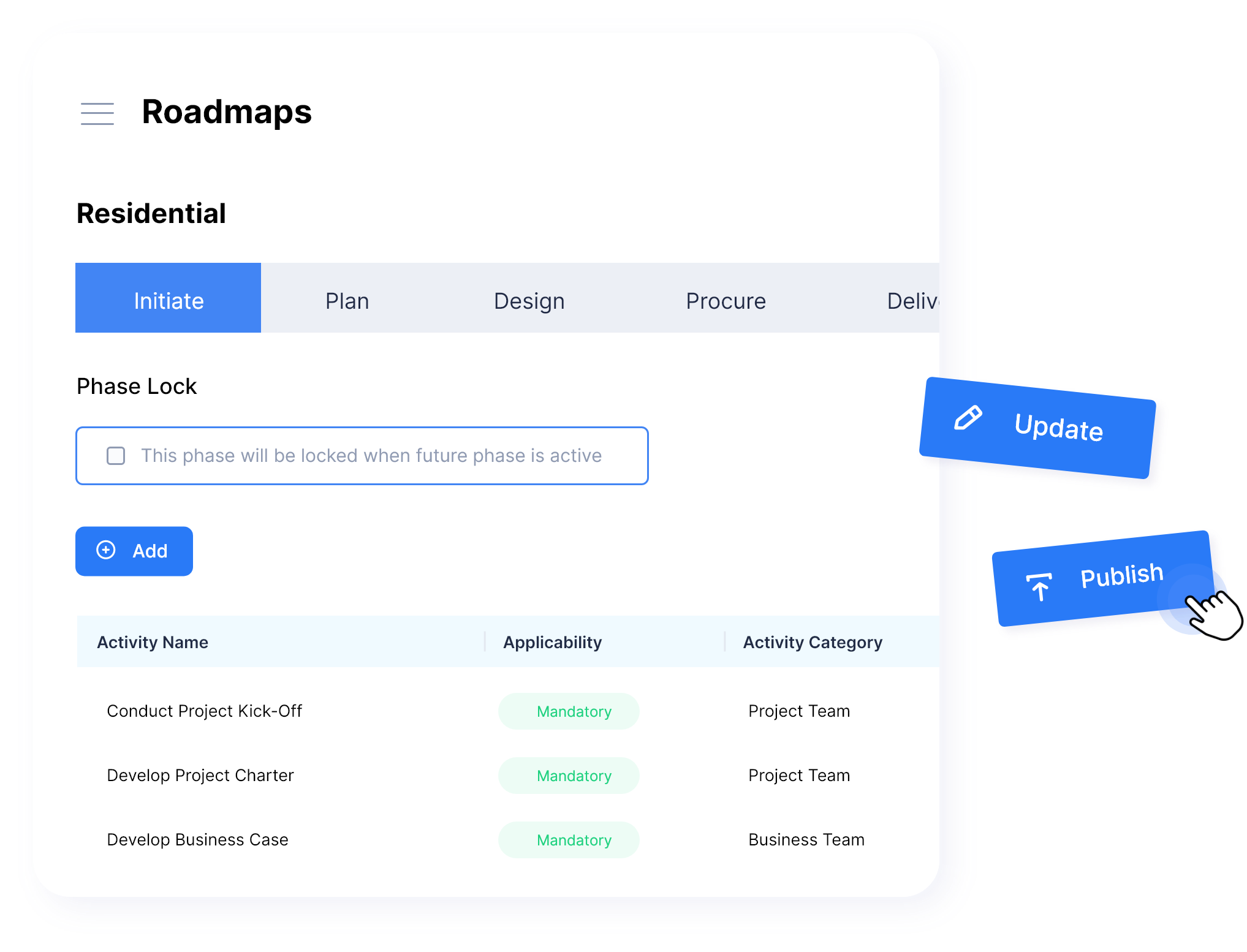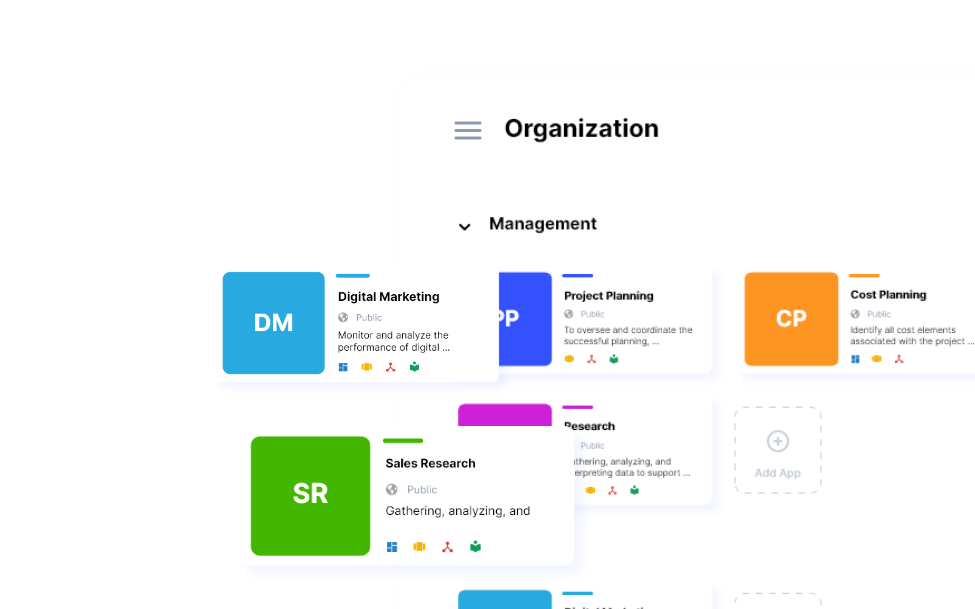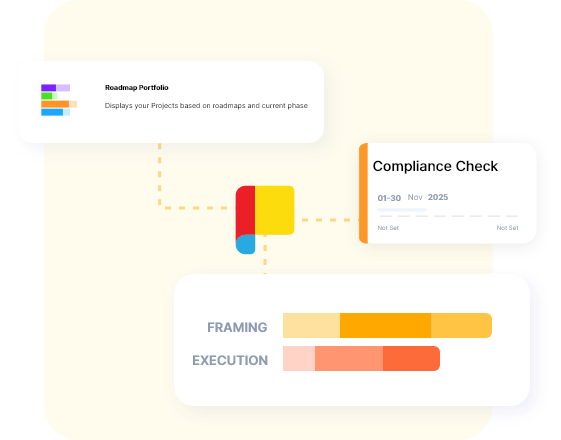 Introduction
Introduction
Businesses today rely on workflow automation tools to standardize processes, enforce compliance, and improve efficiency. However, traditional Business Process Management (BPM) tools often introduce more complexity than simplicity.
Many businesses find it difficult to work with these tools because they require:
- Technical expertise to design workflows using BPMN and process diagrams.
- Lengthy setup and implementation times that delay efficiency gains.
- Heavy reliance on IT, so even small changes are slow to implement and expensive.
This is where Planally comes in. Unlike traditional workflow tools that demand technical know-how, Planally is a no-code platform that allows any team to digitalize and automate workflows—without IT complexity.
In this blog we’ll compare Planally with traditional BPM tools and explore why businesses are shifting towards no-code automation for workflow management, governance, and compliance.
What Are Traditional Workflow Tools?
Traditional workflow tools—often referred to as Business Process Management (BPM) tools—are software systems designed to map, model, and manage business processes. They assist organizations in :
- Defining and documenting workflows using process models and diagrams.
- Automating task execution based on complex business rules.
- Imposing compliance with standard operating procedures (SOPs).
 Most BPM tools follow Business Process Model and Notation (BPMN) standards, requiring process analysts and IT specialists to design workflows. These workflows typically involve:
Most BPM tools follow Business Process Model and Notation (BPMN) standards, requiring process analysts and IT specialists to design workflows. These workflows typically involve:
- 📌 Process Diagrams – Visual representations of tasks, approvals, and decision points.
- 📌 Rule-Based Automation – If-then logic that dictates workflow execution.
- 📌 Role-Based Access – Assignment of approval rights and responsibilities to different users.
Even though these tools may be feature-rich, they are often too complex for non-technical users. As a result, businesses face:
- ❌ Slow adoption due to a steep learning curves.
- ❌ IT bottlenecks, with process updates being very time-consuming.
- ❌ Rigid workflows that are not flexible and not easily changed.
Now, let’s explore why traditional workflow tools are difficult to use and how Planally provides a more agile approach.
Why Traditional Workflow Tools Are Difficult to Use
Conventionally, Business Process Modelling (BPM) tools were designed for large organizations with dedicated process management teams. They are focused on comprehensive process documentation, simulation, and optimization, which, while useful, makes them too complicated for daily business operations.
Complex BPM tools are well suited for large enterprises with dedicated process teams. However, for most businesses, they create more challenges than solutions. Here’s why many companies struggle with BPM tools:
They Require Specialized Knowledge
BPM tools often rely on Business Process Model and Notation (BPMN), Unified Modelling Language (UML), and other process standards. These require:
- Extensive training to understand and apply correctly.
- Process analysts or IT specialists to set up workflows.
- Complex rule-based automation that non-technical users find difficult to modify.
 As an example, to automate an approval process, a procurement team may need a business analyst to map the process, an IT programmer to configure automation rules, and a consultant for regulatory compliance. With too many required resources, implementing BPM tools becomes a slow, rigid, and expensive process.
As an example, to automate an approval process, a procurement team may need a business analyst to map the process, an IT programmer to configure automation rules, and a consultant for regulatory compliance. With too many required resources, implementing BPM tools becomes a slow, rigid, and expensive process.
BPM tools rely on BPMN, Unified Modelling Language (UML), and scripting, requiring:
- Extensive training to use effectively.
- Business analysts and IT specialists for workflow setup.
- Complex automation rules that non-technical users find difficult to modify.
Example: If a digital project management team wants to automate task approvals, they may need:
- A process analyst to map the workflow.
- An IT developer to configure automation rules.
- A consultant to ensure compliance.
This makes BPM tools slow, rigid, and costly.
They Are Built for Documentation, Not Execution
Most BPM platforms were originally created for mapping and analyzing processes, not executing them. As a result:
- Workflows are often modelled separately from actual business operations.
- Employees struggle to follow predefined process maps.
- Any changes require extensive revisions to the process documentation before being implemented.
They Lack Flexibility for Fast-Changing Businesses
Many businesses today operate in fast-paced environments where workflows need to adapt quickly. BPM tools, however:
- Require extensive approvals for process changes.
- Can’t be modified easily by non-technical users.
- Slow down decision-making because every update must go through IT teams.
Bottom Line: Traditional BPM tools focus on process modelling and documentation, whereas businesses need real-time workflow execution and automation—which is where Planally excels.
Planally vs. Traditional BPM Tools: A Feature-by-Feature Comparison
To see how Planally stands apart, let’s compare it to traditional BPM tools across key areas:
Ease of Use: No-Code Simplicity vs. Technical Complexity
| Feature | Traditional BPM Tools | Planally |
| User Experience | Requires BPMN/UML expertise | No-code, drag-and-drop interface |
| Setup Time | Weeks or months | Deploy in days |
| Learning Curve | High, requires extensive training | Low, easy to learn |
| User Access | Mostly for IT and process experts | Anyone in the organization |
Planally allows teams to create and adjust workflows instantly, without IT dependency.
Flexibility: Agile Workflow Automation vs. Rigid Process Modelling
| Feature | Traditional BPM Tools | Planally |
| Process Changes | Requires IT support, long review approval cycles | Can be modified instantly |
| Workflow Customization | Requires scripting and coding | Configurable with drag-and-drop actions |
| Business Adaptability | Slow to adjust to operational changes | Agile and dynamic for evolving needs |
Planally enables businesses to modify and scale workflows on the fly, without technical barriers.
 Governance & Compliance: Built-In vs. Custom Configuration
Governance & Compliance: Built-In vs. Custom Configuration
| Feature | Traditional BPM Tools | Planally |
| Approval Workflows | Manual setup required | Pre-configured and automated |
| Compliance Tracking | Requires custom development | Real-time monitoring and reporting |
| Audit Trail | Often needs external monitoring tools | Built-in audit logs |
Planally simplifies governance with automated compliance tracking and pre-configured workflows.
Real-World Scenario: Automating Digital Project Management Workflows
Let’s compare how a company manages digital project workflows with traditional BPM tools vs. Planally.
Traditional BPM Tool Approach
- A business analyst maps out the digital project workflow using BPMN.
- The IT team configures the workflow inside the BPM tool.
- Project teams undergo training to use the system.
- A change in task assignments or approvals requires IT intervention—taking weeks to implement.
- Stakeholders lack real-time visibility into task progress.
Planally Approach
- The project manager creates a no-code workflow in minutes.
- Approvals, task assignments, and compliance rules are set without coding.
- Employees receive automated notifications for pending actions.
- If a project phase or approval rule changes, an admin updates it instantly.
- Stakeholders have real-time visibility into project progress.
Planally eliminates IT barriers, allowing project teams to manage workflows with agility and efficiency.
Industry-Specific Benefits of Planally
 Different industries have unique workflow challenges. Here’s how Planally solves them more effectively than traditional BPM tools:
Different industries have unique workflow challenges. Here’s how Planally solves them more effectively than traditional BPM tools:
| Industry | Traditional BPM Tool Limitations | Planally Advantages |
| Construction & Engineering | Require complex modelling for project management, delaying implementation. | Allows instant automation of progress tracking, approvals, and document submission workflows. |
| Finance & Compliance | Need custom development for compliance tracking. | Comes with built-in compliance workflows and automated reporting. |
| Government & Public Sector | Require heavy IT dependency for policy enforcement. | Offers pre-configured governance workflows that ensure transparency. |
Planally adapts to industry needs without requiring technical expertise.
Cost & Maintenance: Scalable Affordability vs. High Overhead
Beyond functionality, cost is a major factor in choosing a workflow automation tool. Let’s compare the different factors in cost of ownership for BPM tools vs. Planally:
| Feature | Traditional BPM Tools | Planally |
| Implementation Cost | High, requires consultants and IT | Low, no IT required |
| Ongoing Maintenance | Expensive, needs dedicated IT support | Minimal, handled by business users |
| Training Costs | High due to complex BPMN/UML requirements | Low, easy to learn |
Planally eliminates unnecessary IT costs, making workflow automation more accessible.
Conclusion: Why Businesses Are Moving to No-Code Workflow Automation
For years, businesses have relied on traditional BPM tools to structure and enforce workflows. While these systems promise efficiency, they often introduce more complexity than simplicity, requiring technical expertise, IT intervention, and long implementation cycles.
Planally takes a different approach. Instead of forcing teams to navigate complex process diagrams and rigid automation rules, it provides an easy-to-use no-code solution that empowers businesses to:
- Implement workflows instantly—without IT complexity
With an intuitive drag-and-drop interface, teams can design and modify workflows in minutes, rather than waiting weeks for IT configuration.
- Automate governance & compliance effortlessly
Built-in governance features ensure seamless approvals, audit trails, and compliance tracking, reducing the risk of errors and manual oversight.
- Adapt and scale workflows as business needs evolve
Unlike traditional BPM tools that struggle with change, Planally allows businesses to update processes on the fly, ensuring agility in a fast-paced market.
At a time when business agility is critical, companies need a workflow automation solution that works for them—not against them. Whether you’re managing project approvals, compliance processes, or operational workflows, Planally helps you simplify, automate, and scale without IT roadblocks.
If you’re ready to transform your workflows, Planally is the smarter, faster, and more scalable choice.
Ready to streamline your workflows? Book a demo today!




